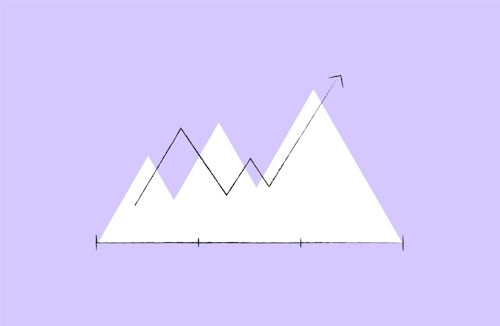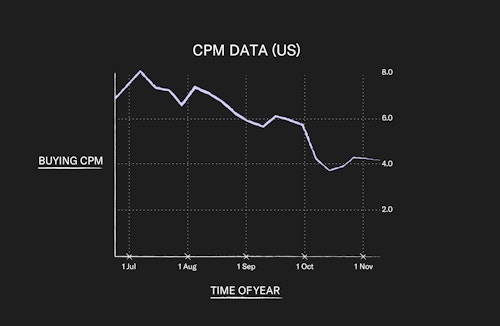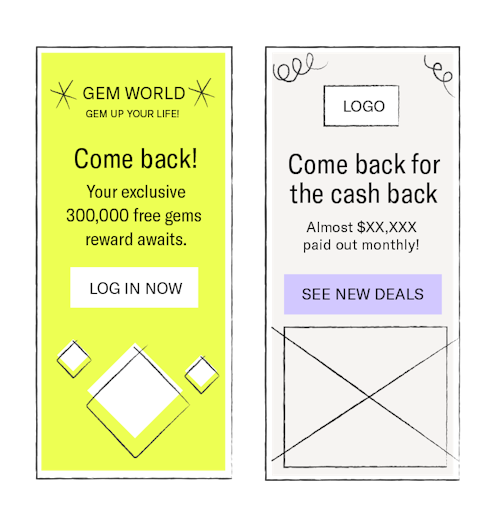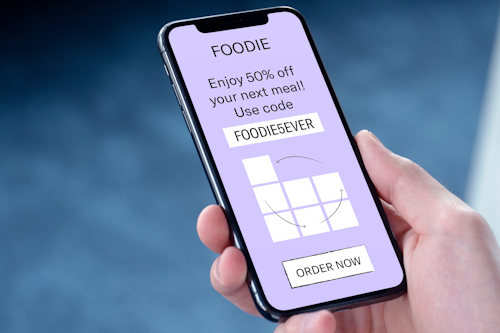No retain, no gain: Why app retargeting thrives during a crisis
December 20, 2022

We’re amid an economic downturn, and marketers are putting the breaks on their campaigns. With mass layoffs, a war in Ukraine, the long-lasting effects of Covid-19, and financial market instability — panic levels are understandably high and it’s easy to see why many businesses’ knee jerk reaction is to cut down on marketing spend. The rising price of everyday goods and services means consumers are becoming more conversative when making casual or spontaneous purchases.
Before pulling budgets, however, marketers should explore all available opportunities, particularly on mobile. In this article, we look at the value of in-app retargeting and why retaining customers during an economic downturn is key to revenue growth.
Why pulling marketing budget could be a costly mistake
We have been here before; in 2008 we were battling a recession, so what have we learned from that experience? One of the notable takeaways is that 60% of brands that increased their media investment during that period saw a 17% rise in incremental sales.
It’s not a case of continuing to spend in the same way, though. According to Global Recession: The Insights You Need from Harvard Business Review 2021, “[...] firms that maintain their marketing spending while re-allocating it to suit the new context typically fare better than firms that cut their marketing investment.”
Today’s marketers must therefore adapt to consumer behavior and industry trends to succeed during an economic downturn. For app marketers, the current situation is opening new doors.
App marketing opportunities during an economic downturn
Improve brand awareness for pre-recession spending
Making noise when everyone else is quiet means you stand out. Building brand awareness is a cyclical process, so even if you have reduced your budgets or are considering re-allocating spend, always aim to keep your app at the forefront of the user’s mind.
If customer spending decreases as a result of the economic downturn, people still need to know your app exists for when purchasing habits return to pre-recession levels. Research from HubSpot shows that 25% of US consumers intend to spend more consciously during this recession, with 30% spending less.
Now is the optimal time to think about your engagement strategies. Retargeting, for example, can help establish brand recall — a point where customers are familiar with your brand and are more likely to interact with it in the future. Making your audiences aware of your brand increases the chances of a conversion when they are ready to take action.
Take advantage of fewer competitors in the market
Fewer competitors mean more opportunities for your app. Get out there and dominate the market while everyone else halts spending or is still figuring out budget allocation.
It’s important to move quickly on this because if a similar-sized competitor doubles its marketing investment, you stand to lose 15% of your business, according to The Rules of Recession-Proofing by Analytic Partners.
« App businesses can’t just rely on user acquisition to drive loyalty »
Steve Massaro, Director of Channel Alliances, Remerge
Capitalize on additional programmatic ad inventory
A drop in demand also frees up additional programmatic ad inventory, which can result in lower cost per impression and cost per click rates.
Looking at the US, data from our platform shows that the cost per thousand impressions (known as CPM) has been on the decline since Q3 2022 (43% less overall when looking at July to November) — this is a unique chance to reach your app audiences for a much lower cost.

Source: Remerge buying cost per mille (CPM) data, July-October 2022
In-app retargeting wins during times of financial crisis
Companies can use an economic downturn, and the opportunities it presents, to try out and invest in new marketing strategies. As part of an article for The Drum on How to retain customers into 2023 and beyond, Remerge’s Director of Channel Alliances, Steve Massaro, discussed why relying solely on tried and tested user acquisition (UA) campaigns is an error:
“There’s never been a more important time to ensure you’re using your budget wisely to tackle the full funnel by layering retargeting into your mobile campaigns. App businesses can’t just rely on user acquisition to drive loyalty. The majority of people visiting your app or website aren’t necessarily going to sign up and make purchases without additional touch points, so pushing all of your budget towards acquisition or brand-focused ads is going to be very limiting. Having a great retargeting strategy is pivotal for retaining and maximizing the value of your existing users."
Let’s take a closer look at why the savviest app marketers are turning to retention-based strategies and how you can implement these within your organization.
« An early in-app engagement strategy can give you a more sizeable return on investment than a UA-driven approach »
Attract newly acquired customers with early engagement campaigns
Retaining your newly acquired users is essential during an economic crisis. You’ve already invested in attracting them to your app — don’t let those efforts (and budget) go to waste by failing to engage these users and having them uninstall.
Many mobile businesses experience a considerable drop in retention within the first 7 days of a user installing their app, with some categories in the mobile gaming industry losing almost half of their audience by day four. Reminding users why they downloaded your app from the beginning of their journey will help you retain their interest and bring them down the funnel towards becoming a paying customer.
To avoid cannibalizing organic conversions, you can exclude users who have installed the app and shown no activity within a set timeframe, such as the last seven days. For mobile games, we’ve found that excluding these recent installers does not significantly decrease segment sizes and lets marketers retarget users they know are using the app. More than 80% of our gaming clients set inactivity windows to less than seven days for their in-app retargeting campaigns, with approximately 10% setting their inactivity window at zero days.
Research shows that retargeting customers is typically a fraction of the cost it takes to acquire new users, so when marketing budgets are stretched, an early in-app engagement strategy can give you a more sizeable return on investment than a UA-driven approach.
Nurture existing customers with in-app loyalty programs
Nurturing your most engaged and highest paying customers will pay off in the long-run as these audiences provide a steady and reliable source of revenue. Nowadays, people are on the lookout for brands that prioritize valuable customer relationships. In fact, 57% of consumers will increase spending with brands that are willing to put the work in and build a connection.
Loyalty programs ensure customers are more engaged, give people a reason to return to your app, and in turn, help you establish a value exchange with users. You can use in-app retargeting campaigns to promote early access to discount offers or new products, and tailor this ad experience with personalized product recommendations. Here’s some creative ad examples which demonstrate how you can do this:

Bring users back to your app with in-app loyalty programs.
Create granular user segments to increase conversions
Focusing on granular segmentation strategies helps you target existing customers with specific promotions and allows you to shift spend to customers most likely to convert and make additional purchases. To start with, consider splitting your user base by:
- Whales/big spenders
- Consistent purchasers
- Highly-engaged users (this audience may not spend big or consistently but shows strong in-app activity)
From there, you can experiment with sub-segments by separating users by criteria such as inactivity windows or purchase frequency. As an example, one of our biggest gaming clients uses the following segmentation strategy for their retargeting campaigns: recent installers with and without a purchase, active users, and new installers with certain timeframes, from 0-2 days and 2-8 days.
Establish a value exchange
It’s never been more important to establish a value exchange with your customers. But there’s a fine balance. Be sure to find new ways of encouraging users to come back to their app without being invasive or pushing users to the point of opting out of ad tracking or uninstalling. Reconsider dedicating all of your budget on acquiring new customers. Instead, focus on building a connection and converting existing, fully-engaged users.
Get the latest app marketing insights
Join our newsletter





